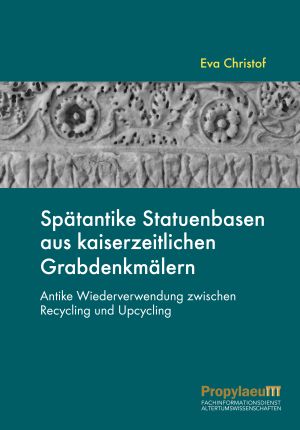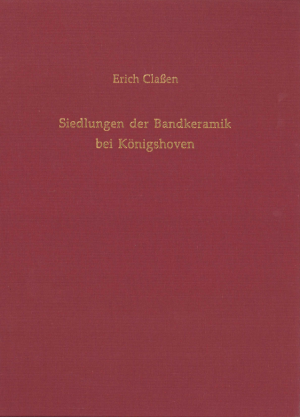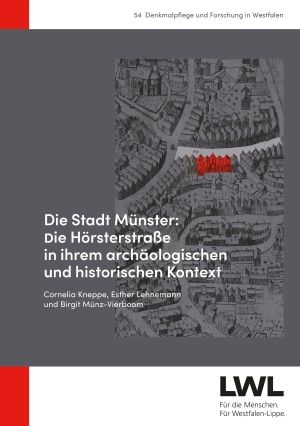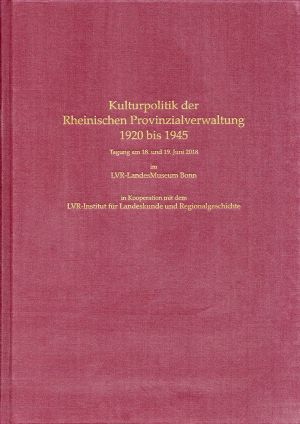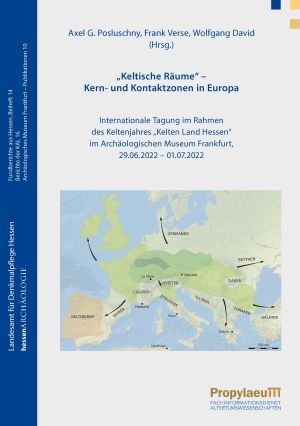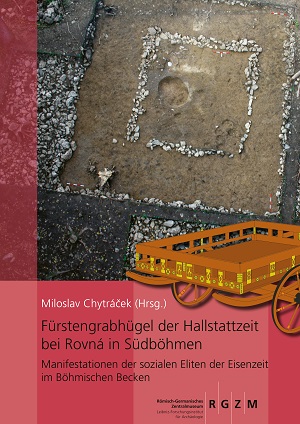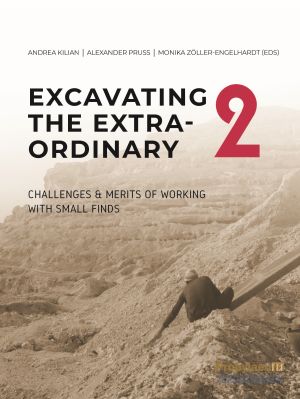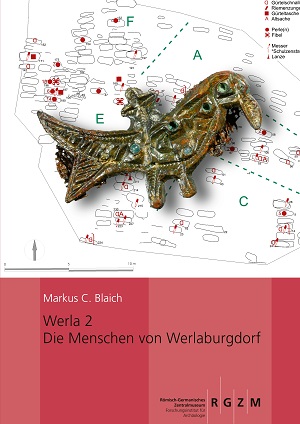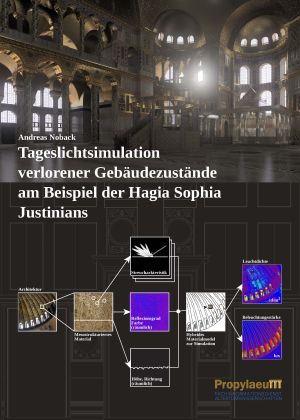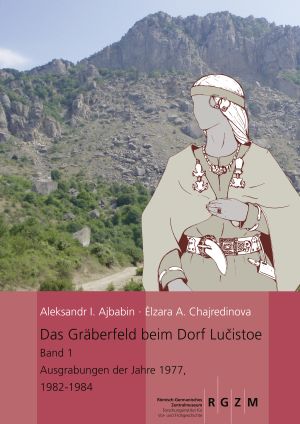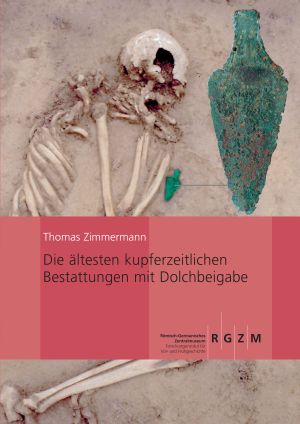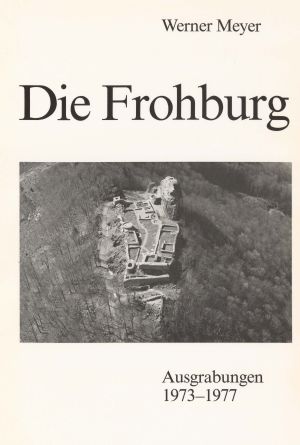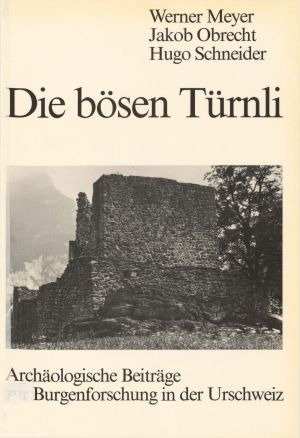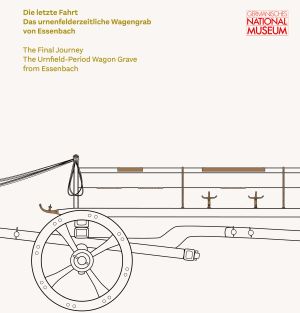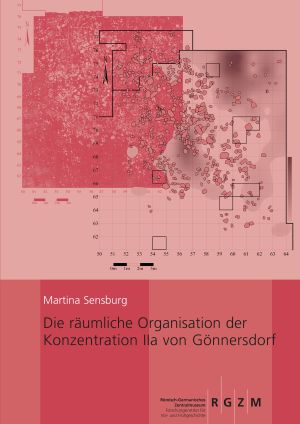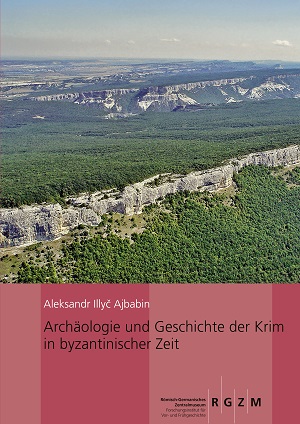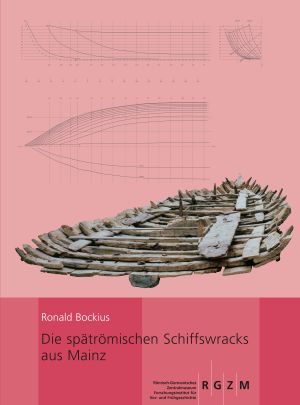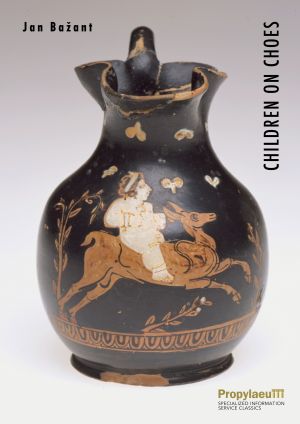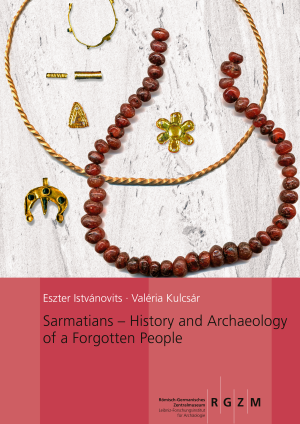Books
Gesture, Stance,and Movement: Communicating Bodies in the Aegean Bronze Age. Acts of the International Conference at the University of Heidelberg, 11–13 November 2021
The meaning of action in figurative imagery is conveyed through bodily posture, placing the depicted figures – humans, gods, or hybrids – in relation within coherent visual narratives. Especially for societies with few deciphered texts, the analysis of gesture, posture, movement, and facial expression is crucial for understanding ancient ‘webs of significance’. With 29 papers from a conference held in Heidelberg in 2021, this volume examines ‘body language’ in Minoan Crete and Mycenaean Greece and proposes new ways of interpreting non-verbal communication in Aegean Bronze Age iconography.
Spätantike Statuenbasen aus kaiserzeitlichen Grabdenkmälern: Antike Wiederverwendung zwischen Recycling und Upcycling
The aim of this study was to re-examine the bases of Late Antique statues in Italy in order to identify all those which were not simply reused, but which had initially been used as funerary monuments. This identification is possible when the same stone not only bears a Late Antique statue inscription, but also an earlier funerary inscription. By analysing Late Antique statue bases for the first time according to archaeological criteria, the author was able to find many more examples of the reuse of such funerary monuments. Considerations based on different perspectives, such as different practices of ancient reuse, enable a comprehensive assessment of this phenomenon, which is described here for the first time.
Siedlungen der Bandkeramik bei Königshoven
Based on almost 40 years of archaeological field research in the lignite open-cast mine near Garzweiler, this multi-award-winning doctoral thesis analyses 15 settlements of the first farmers in the Rhineland. The focus is on settlement development and structures, which enable, among other things, model calculations on land use. Other economic and social aspects are - based on archaeological finds - examined in the work using methods of Social Network Analysis. They reveal changes in the structures within early farming society - i.e. social change - that was a decisive factor in its demise.
Die Stadt Münster: Die Hörsterstraße in ihrem archäologischen und historischen Kontext
Die Hörsterstraße in Münster ist seit dem 12. Jahrhundert Teil der Stadtgeschichte. Abseits der großen Bürgerhäuser tritt hier ein Wohnquartier in den Fokus der archäologischen und historischen Untersuchungen, in dem Menschen aller gesellschaftlichen Schichten lebten.
Einschneidende Ereignisse wie die Zerstörung im Siebenjährigen Krieg und der folgende Wiederaufbau lassen sich auch im archäologischen Befund nachvollziehen. Aus einem komplexen Baubefund und breit gefächertem Fundmaterial analysieren Cornelia Kneppe, Esther Lehnemann und Birgit Münz-Vierboom Aspekte der materiellen Alltagskultur in der Hörsterstraße 40–45 vom Mittelalter bis in die jüngste Vergangenheit.
Kulturpolitik der Rheinischen Provinzialverwaltung 1920 bis 1945: Tagung am 18. und 19. Juni 2018 im LVR-LandesMuseum Bonn
The Landschaftsverband Rheinland (LVR) is confronting its history - with a view to the Nazi past, this means: The LVR, as the successor to the Rhenish Provincial Association, is asking probing questions about its own past that previous generations did not want to hear. The LVR's cultural department occupies strong research positions: The 2012 conference “Archäologie und Bodendenkmalpflege in der Rheinprovinz 1920–1945“ looked at archeology as a cultural factor and a science of legitimation. One result: the provincial association was not on the sidelines when it came to implementing the regime's cultural policy goals. At the same time, the LVR-Landesmuseum Bonn is conducting provenance research on its collection. It also provided the forum for a conference in 2018 because pressing questions arose: How did the Nazi state's cultural policy prevail in the Rhine Province? Where did the Third Reich's state measures create or maintain structures at the provincial level, and where did networks and careers block each other? The results of the research are available as conference contributions.
„Keltische Räume“ – Kern- und Kontaktzonen in Europa: Internationale Tagung im Rahmen des Keltenjahres „Kelten Land Hessen“ im Archäologischen Museum Frankfurt, 29.06.2022 – 01.07.2022
As part of the "Celtic Year" organised in Hesse in 2022, a three-day conference was held at the Archaeological Museum Frankfurt. 25 lectures presented current research on the similarities of and differences between Iron Age cultures in various regions of Europe. In each case, archaeological features typical of the region were named and compared with those of neighbouring regions in order to provide a basis for recognising cultural core, peripheral and contact areas during the Iron Age. The present anthology of the Frankfurt conference comprises 15 articles chronologically covering the Hallstatt and Latène periods and providing a suitable overview of the topic.
Fürstengrabhügel der Hallstattzeit bei Rovná in Südböhmen: Manifestationen der sozialen Eliten der Eisenzeit im Böhmischen Becken
In 2012-2013, an archaeological rescue excavation was carried out in the cadastral municipality of Rovná near Strakonice in Bohemia in the large Hallstatt period burial complex 1. The reason for the excavation was the illegal robbery in 2009, when five bronze vessels were torn out of the ground. Without context, the objects had only the value of a single find. In order to preserve this newly identified and immediately threatened burial complex with characteristics of a so-called princely tomb, it was necessary to carry out a rescue excavation within the framework of the programme for internal support of international cooperation projects of the Academy of Sciences of the Czech Republic. The project focused on a detailed area excavation of the threatened burial mound with special attention to modern archaeological and bioarchaeological methods. The excavation as well as the research work was carried out in close cooperation between the Archaeological Institute of the Academy of Sciences of the Czech Republic Prague, the South Bohemian Museum in České Budějovice, the South Bohemian University in České Budějovice and the Roman-Germanic Central Museum in Mainz. The discovered features as well as the artefacts are unique in all of Central Europe: Two Hallstatt period elite burials with many extraordinary finds were uncovered, as well as a secondary Latène period burial pit and an early medieval child's grave. The bronze vessels and all other artefacts from Rovná are now owned by the South Bohemian Museum in České Budějovice. This monograph contains the summary of all research results obtained during the investigation of burial mound 1 in Rovná, including the graphic and photographic documentation of the artefacts found as well as the archaeological contexts.
Excavating the Extra-Ordinary 2: Challenges & Merits of Working with Small Finds. Proceedings of the International Workshop at Johannes Gutenberg University Mainz, 25–26 November 2022
The international workshop ‘Excavating the Extra-Ordinary 2. Challenges & Merits of Working with Small Finds’ is the continuation of the successful format from 2019. Thematically, it deals with the challenging work with seemingly ‘ordinary’ small finds and their processing. This year, the range of content has been interdisciplinarily expanded to include the field of Near Eastern Archaeology.
To this end, specialists from excavations, museums and institutions presented and discussed the latest findings at Johannes Gutenberg University in Mainz in November
2022. This volume offers contributions from the workshop, including dealing with large quantities of material, analysing fragmentary finds and addressing methodological problems. The variety of materials discussed ranges from stone, wood and pottery artefacts to metal objects. The new volume this time also presents findings such as the functional reuse of objects of material culture.
Werla 2: Die Menschen von Werlaburgdorf: Ein Beitrag zur Geschichte des Nordharzvorlandes im 8. bis 10. Jahrhundert
For northern Germany, the period of Charlemagne's Saxon Wars (772-804) was one of the most violent upheavals in its history. Over the next two centuries, the Harz foothills were transformed from a military outpost into the heartland of Ottonian royal power. The coronation of Heinrich I (919) and the election of his son Otto the Great (936-973) as his successor marked the end of this transformation. However, it is difficult to trace the changes in Saxon society on the basis of the available accounts and documents.
For this reason, the cemetery of Werlaburgdorf, with its approximately 260 inhumations, deserves special attention. It is the largest necropolis of its kind in the Brunswick region and has been almost completely excavated. It was in use between the mid 8th and mid 10th centuries. The associated settlement probably comprised a maximum of five to seven families or farmsteads. The combination of anthropological research (including age structure, sex ratio, infant mortality and disease burden) and archaeological analysis allows further conclusions to be drawn about the internal structure of the burial community and the possible occupation of several areas.
The cemetery of Werlaburgdorf is located in the immediate vicinity of the Werla-Palatinate, which was first mentioned in 926 - the analysis of the cemetery from a supra-regional perspective offers a very special view of the Werla-Palatinate and the consequences of its establishment for the rural population.
Tageslichtsimulation verlorener Gebäudezustände am Beispiel der Hagia Sophia Justinians
The interior lighting of Hagia Sophia has been praised since late antiquity but is no longer comprehensible in the preserved building state. By transferring methods of daylight simulation of modern buildings to historical research, it is possible to investigate the dynamic interplay of direct and diffuse lighting with the sparkle of the precious materials in the 6th century's state. In addition to its exemplary application, this work provides a theoretical framework for daylight simulation in the context of geometric reconstruction, the reconstruction of optical properties and perceptual-psychological analysis.
Supplementary data you find here: https://doi.org/10.11588/data/TONJFH
Das Gräberfeld beim Dorf Lučistoe
The cemetery near the village of Lučistoe on the southern coast of Crimea is a unique historical monument from the Migration Period. Between 1982 and 2007, 295 graves dating from the 5th to the 18th century were investigated. The catalogued source material makes it possible for the first time to study the population of the Crimean highlands over such a long period. With this volume, the RGZM begins the publication of the cemetery of Lučistoe, which is of great importance for the history of the Crimea and Eastern Europe. A detailed commentary provides a chronological and cultural-historical classification of the research results.
Die ältesten kupferzeitlichen Bestattungen mit Dolchbeigabe
The main objective of this study is to collect and analyze relevant closed single grave finds with mainly silex or metal daggers from the third millennium BC. However, to approach this complex of problems as comprehensively as possible, the earliest evidence of double-edged thrusting weapons from Eastern and Southeastern Europe and Western Asia Minor were also considered in their ritual funeral context. A larger digression is also devoted to the early manufacture of daggers in predynastic Egypt.
In addition to discussing chronological aspects of this arming custom, the genesis and spread of formal and technological traditions of this type of weapon are at the center of our interest. The critical question in this context is whether and how the dagger-bearing part of the population in the burial rite differs from burials at the same time without the addition of thrusting weapons. Ultimately, this leads to socio-historical considerations regarding how far the dagger can be understood as a status-forming accessory.
Latènezeitliche Mühlen aus dem Gebiet zwischen den Steinbruchrevieren Mayen und Lovosice
Mills produced in the quarry areas around Mayen and Lovosice were highly sought after in the Latène period due to their high quality. Again and again they appear in unexpectedly distant settlements. The region in between therefore lends itself to reconstructing the economic spheres of influence of both quarries.
By documenting as many mills as possible in this area and using petrographic analyses, it is possible to characterise these important quarries and identify other previously unknown sources. For the first time, sales areas and economic structures are documented in terms of cultural history and natural science. In addition to explanations of production, operation and utilisation, a compilation of the oldest mills in western Europe and the question of their inventors round off the study.
Akteure und Organisation der Handelsschifffahrt in den nordwestlichen Provinzen des Römischen Reiches
In ancient times, goods were transported by water whenever possible - including in the northern provinces of the Roman Empire, which were surrounded by the Mediterranean, Atlantic and North Sea. Here, a dense network of rivers offered ideal conditions for inland shipping.
We know a number of players in merchant shipping from inscriptions. In the northern provinces, these were mainly shipowners who referred to themselves as nauta inland and navicularius on the Gallic Mediterranean coast. The Gallic navicularii were also involved in transporting supplies to the capital Rome in the western Mediterranean. Based on the inscriptions, this study examines the professional groups involved in merchant shipping and their associations.
Die Verbreitung von Terra Sigillata aus den Manufakturen von Arezzo, Pisa, Lyon und La Graufesenque: Die Transformation der italischen Sigillata-Herstellung in Gallien
In the last decades of the 1st century B.C., some of the major producers of sigillata in Arezzo set up branches in Gaul to serve the local market. These soon drove the parent companies out of business. This process is documented by 230 distribution maps.
The branches in Gaul are presented in the context of the development of economic centres. They led to a transformation of this originally Italic industry, which was also reflected in a change in the legal status of potters and potteries in Gaul. In addition, transport costs were determined using GIS applications and visualised on maps. Dated sites allow a chronological categorisation of the potters discussed.
Die Frohburg: Ausgrabungen 1973-1977
The excavations carried out between 1973 and 1977 were the third attempt at examining Frohburg Castle by archaeological means. In this volume Werner Meyer outlines the course and results of the excavations. The first chapter on the history of research is followed by an analysis of the features excavated and the small finds recovered. The written records provide additional important insight. The final chapter presents the results of the examinations. The topics discussed include the history of construction and settlement, the economic and social history and, finally, the castle typology.
Unfertigkeit in antiker Architektur: Definitionen und Ursachen. Beiträge einer Sektion des Neunzehnten Internationalen Kongresses für Klassische Archäologie in Köln und Bonn am 23. Mai 2018
Almost no building of Greco-Roman antiquity is free of imperfections, although these vary greatly in type and extent. But what was perceived as unfinished in antiquity? What were the reasons for unplanned incompleteness? What was tolerated or even became a desired art form over time?
After a systematic introduction to the topic, seven contributions deal with humpbacked bosses and polygonal columns, then some case studies in Asia Minor - in particular the early Hellenistic mausoleum of Belevi, the late Roman eastern stadium gate in Miletus and several imperial buildings in Ephesus - and finally the huge Severan building complex in Leptis Magna (North Africa).
Die bösen Türnli: Archäologische Beiträge zur Burgenforschung in der Urschweiz
This volume contains reports on the excavations and architectural investigations carried out at several castle sites in the cantons that made up the “Old Swiss Confederacy”. Six sites are presented: the castle ruins at Attinghausen, Seedorf, Zwing Uri, Gesslerburg, Schanau and Landenberg above Sarnen. The final chapter by Werner Meyer deals with the construction and demolition of castles in the region that is considered to have constituted the “Old Swiss Confederacy”. The book also contains numerous photographs and drawings.
Die letzte Fahrt: Das urnenfelderzeitliche Wagengrab von Essenbach
The Early Urnfield period wagon grave from Essenbach (Landshut district, Lower Bavaria) uncovered during a planned excavation in 2011 is an important new exhibit to the collection of the Germanisches Nationalmuseum. This volume, published on the occasion of an exhibition on this important feature, presents the Essenbach wagon grave and categorises it in terms of the society, economy and religion of the Urnfield period.
Die räumliche Organisation der Konzentration IIa von Gönnersdorf
The Magdalenian site of Gönnersdorf represents one of the rarest Late Palaeolithic settlements in Europe. Since its discovery in 1968, its exceptional preservation has enabled a steady increase in knowledge about the way of life of Ice Age hunter-gatherers. Thus, the fundamental investigation of the settlement structures in the large concentrations I, III and IV has already taken place. However, the central and at the same time richest concentration IIa has not yet been dealt with. With the present work, this gap can now be closed.
The focus of the analyses of K IIa is primarily on a reconstruction of the everyday activities of the former inhabitants. For this purpose, the spatial relationship of latent find distributions to the evident features, such as the central dwelling plan, the pits and the hearths, is discussed in detail. From this, as well as from the compositional analyses, decisive indications finally emerge that lead to the development of a completely new occupation model, not only for K IIa, but for the entire site.
Archäologie und Geschichte der Krim in byzantinischer Zeit
Although the archaeology and history of the Byzantine Crimea is a well-researched subject, the results of this research have received little attention outside the Russian-speaking world.
This monograph by the internationally renowned archaeologist Aleksandr I. Ajbabin, the result of a joint project between the RGZM and the Ukrainian Academy of Sciences, is intended to help raise awareness of this region, which was essentially characterised by the tense relationship between the steppe peoples and the Byzantine Empire.
This thoroughly revised and expanded translation of the work, which was first published in Russian in 1999, provides the German public with a comprehensive overview of the find material and its chronology, some of which is difficult to access.
Die spätrömischen Schiffswracks aus Mainz: Schiffsarchäologisch-technikgeschichtliche Untersuchung spätantiker Schiffsfunde vom nördlichen Oberrhein
As the only representatives of their kind, the ship finds from Mainz shed new light on late Roman military history. Their state of preservation provides insight into partly complex boat-building techniques and measures, which reveal links with the Romano-Celtic seagoing ship of north-western Europe; at the same time, Mediterranean know-how is also recognisable. Traces of ancient surveying and construction bear witness to special planning and work organisation achievements. Moreover, nowhere else is there such a comprehensive opportunity for the structural study of Roman belt drive systems and how they interacted with humans.
Designed as an evaluation of the archaeology of ships and the history of technology, and with a comparatively broad scope, the book opens up a new order of the finds, differentiating both chronologically and in terms of ship type. Meticulous documentation in words and pictures forms the basis for plan reconstructions that trace the shape, size, equipment and usability of the vessels.
Children on Choes
Between the second half of the fifth century BC and the first quarter of the following century, there was an increase in Athenian choes featuring images of children. A systematic analysis of these vase paintings has discovered that the painters did not document the lives of Athenian children, their activities, and how their parents perceived them. However, the choes with depictions of children is a valuable source of historical information on the self-image of Athenian men.
Sieg und Familie im frühen Prinzipat: Eine Studie zur militärischen Repräsentation der Verwandten des Augustus
This book examines how the military prowess of Augustus’ family was advertised within the city of Rome. The study draws on a variety of different sources. The focus is on contemporary written sources – in particular texts by the poets Virgil, Horace and Ovid. In addition, the study takes into account Rome’s monumental architecture and reports on celebrations for Augustus’ relatives held in the city. On this basis, the book paints a multifaceted, polyphonic picture of the discourse surrounding Rome's new first family and its military achievements.
Sarmatians – History and Archaeology of a Forgotten People
The book’s aim is to make a comprehensive introduction of the Sarmatians, the crucial people in the world of Iranian language speaking nomads.
The first part of the volume deals with the history and archaeology of these tribes starting from their emergence to the Hunnic invasion after which Iranian domination of the steppe belt was replaced by the power of Turkic nomads. Based on literary sources and archaeological material, the second part synthetises the history of the Sarmatians in the Carpathian Basin from the 1st to 5th century AD. A special emphasis is put on the steppe relations of the Alföld Sarmatians, innovations brought by new migration waves and, their impact on the autochthonous population. The third part is an outlook to the afterlife of the Sarmatians the traces of which stretch out from Britain to China.




